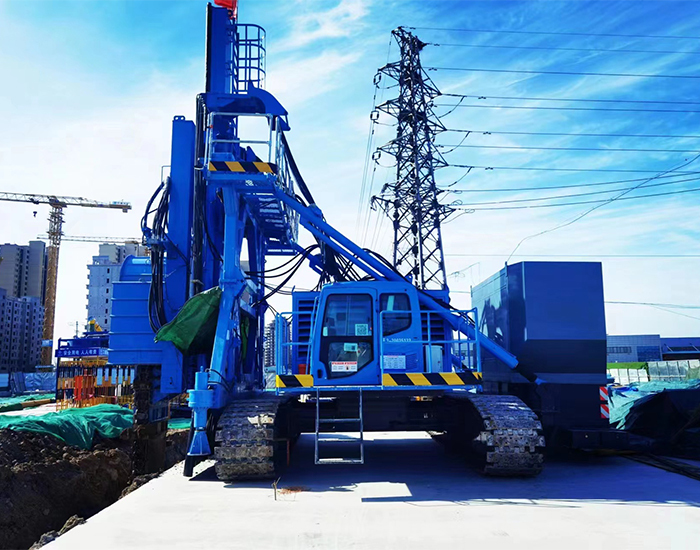



TRD Method - Process Principle
1、Principle: After the chain-blade cutting tool is cut vertically and continuously to the design depth, it is pushed horizontally and injected with cement slurry to form a continuous, equal thickness and seamless cement wall ;
2、Insert core material (H-shaped steel, etc.) into the cement mixing wall of equal thickness to form a composite retaining and water stop structure.
TRD Method - Features and Scope
1. It is applicable to clay, sand, gravel and gravel layers, and also has good applicability in dense sand layer with 30-60 standard penetration value and soft rock with saturated uniaxial compressive strength not exceeding 10 MPa;
2. The depth of the finished wall can reach 70 meters, and the verticality deviation shall not be greater than 1/250 (when the TRD verticality deviation is not greater than 1/300 when it is used as the reinforcement of the inner and outer trench walls of the ground wall);
3. Wall thickness 550-950 mm
4. The cement is evenly mixed, and the unconfined compressive strength is 0.5-2.5MPa;
5. The wall has good water resistance, and the permeability coefficient can reach 1x10-6 cm/s to 1x10-7 cm/s in sandy soil;
6. The spacing of the interpolated profiles can be evenly arranged with equal spacing, and the rigidity of the enclosure is more uniform;
7. The maximum height of construction machinery is generally not more than 12 meters, and the center of gravity of construction frame is low, with good stability.

